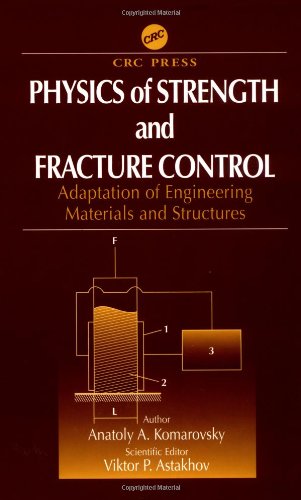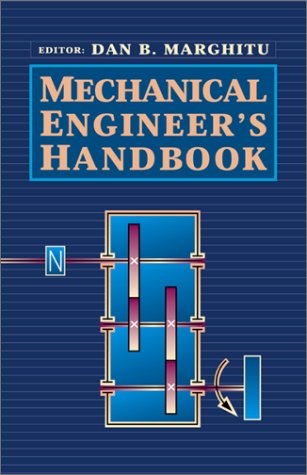Anatoly A. Komarovsky, Viktor P. Astakhov9780849311512, 0-8493-1151-9
Table of contents :
PHYSICS of STRENGTH and FRACTURE CONTROL……Page 1
Preface……Page 5
Background……Page 7
Why One Needs This Book……Page 8
Acknowledgments……Page 9
The Author……Page 11
The Scientific Editor……Page 13
Introduction: History and Overview, Objectives and Problems……Page 14
List of Symbols……Page 20
Contents……Page 25
1.1 Introduction……Page 29
1.2 The State of Electrons and Nuclei in Isolated Atoms……Page 30
1.3 Diagram of Formation and Energy of the Paired Bonds……Page 39
1.4 Character of Movement of Bound Atoms……Page 48
1.5 Localization Parameters and Rotos State Equation……Page 55
1.6 Electrodynamics of Interatomic Interaction……Page 61
1.7 Thermal Radiation, Phase Transitions, and Formation of Vacancies……Page 66
1.8 Condition of Stability. Low- and High- Temperature Disintegration……Page 72
1.9 Failure at the Debye Temperature……Page 77
1.10 Three Mechanisms of Disintegration of the Bonds………..Page 83
1.11 Deformation, Coriolis Forces, and Inertial Effects……Page 87
1.12 Transition from Atomic Mechanics to Thermodynamics……Page 93
2.2 Basic Thermodynamic Potentials……Page 97
2.3 Potentials of Systems with a Varying Number of Interatomic Bonds……Page 111
2.4 Thermodynamic Equation of State of a Solid……Page 115
2.5 Parameters of State, Relationship of Equivalence, and Entropy……Page 124
2.6 Brittle and Ductile Structures……Page 141
2.7 Temperature Dependence of Mechanical Properties……Page 156
2.8 Periodic Law of Variations in State……Page 180
2.9 Phase and Aggregate States of Materials……Page 184
2.10 Mechanical Hysteresis: Causes of Formation and Practical Consequences……Page 192
2.11 Compresson Ò Dilaton Nature of Dislocations……Page 201
3.1 Introduction……Page 212
3.2 Equation of Interaction……Page 213
3.3 Analogy between Polarization, Magnetization, Force, and Thermal Deformation……Page 223
3.4 Orientation Nature of Elastic Stage of Deformation……Page 229
3.5 Plastic Deformation and Destruction Processes……Page 238
3.6 Scale Effect: Causes of Initiation, Forms of Manifestation, and Dangerous Consequences……Page 244
3.7 Mechanism of Formation of the Maxwell- Boltzmann Factor……Page 264
3.8 Dependence of Mechanical Properties on the Packing Density of a Structure……Page 277
3.9 Variation of State in Compression and Tension……Page 286
3.10 Complex Stressed States: Mechanism of Formation and Prospects of Application for Fracture Prevention……Page 300
3.11 Mechanical, Thermal, Ultrasonic, Electron, Chemical, and Other Effects in Deformation and Fracture……Page 310
4.1 Introduction……Page 323
4.2.1 The Known Results……Page 324
4.2.2 Physical Nature of the Dynamic Effect and Its Manifestation through Strengthening,……Page 327
4.2.3 Investigation of the Effect in Tension and Compression……Page 338
4.2.4 Dynamics of Bent Structural Members……Page 344
4.3 Durability……Page 351
4.3.1 Equation of Durability……Page 352
4.3.2 Structural Transformations in Sustained Force and Thermal Fields……Page 359
4.3.3 Durability in Tension ( Rupture), Compression, and Bending……Page 368
4.3.4 Dynamic and Sustained Strength. Assuring Durability by Traditional……Page 373
4.3.5 Relationship of Durability, Creep, and Fatigue Limit……Page 378
4.3.6 Method for Estimation of Durability in Design……Page 383
5.1 Introduction……Page 389
5.2 Aging……Page 390
5.2.1 Thermal Aging……Page 396
5.2.2 Strain Aging……Page 402
5.3 Hydrogen Embrittlement……Page 406
5.4 Radiation Damage……Page 409
5.4.1 Strengthening and Softening……Page 410
5.4.2 Embrittlement……Page 413
5.4.3 Long- Term Strength……Page 415
5.5 Moisture- Induced Softening of Porous Materials……Page 416
5.6 Durability of Unstable Structures……Page 425
5.7 Defect Healing and Damaged Structure Restoration……Page 432
6.1 Introduction……Page 439
6.2 Concentration of Stresses as an Inherent Property of Crystalline Structures……Page 440
6.3 Rigid- Link Nature of Fracture……Page 448
6.4 Probability and Thermodynamic Aspects of the Deformation Diagrams……Page 454
6.5 Mechanism of Formation and Development of Cracks……Page 467
6.7 Crack Propagation and Restraint……Page 478
6.7 Retardation of Cracks……Page 487
7.2 Equation of Thermomechanical Fatigue……Page 492
7.3 Compresson-Dilaton Nature of Fatigue……Page 499
7.4 Prediction of Thermal Ò Mechanical Ò Radiation Fatigue……Page 506
7.5 Prevention and Relief of Fatigue……Page 511
8.1 Introduction……Page 516
8.2 Diagnostics of Stress Ò Strain State……Page 517
8.3 Determination of Strength of Materials Using Elastoplastic Hardness Indicators……Page 523
8.4 Prediction of Residual Resource and Durability……Page 529
9.1 Introduction……Page 533
9.2 Control of Physical Ò Mechanical Properties……Page 535
9.3 Controllable and Noncontrollable Modes of Ensuring Strength, Reliability, and Durability……Page 539
9.4 Principles of the Theory of Design of Materials Properties……Page 546
9.5 Formation of Anisotropic Structures……Page 555
9.6 Correction of Resource after Solidification……Page 563
9.7 Technologies for Formation of Variatropic Structures……Page 569
9.8 Control of the Stress Ò Strain State……Page 577
9.9 Prevention of Deformation and Fracture in Competing Fields……Page 584
9.9.1 Mechanical Methods……Page 585
9.9.2 Electric Methods……Page 589
9.9.3 Magnetic Methods……Page 591
9.9.4 Thermal Methods……Page 595
9.10 Promising Technologies and Ingenious Design Solutions……Page 606
9.10.1 Structural Systems Adaptable to Service Conditions ( ASS)……Page 607
Super- Deep Exploration Geoprobe……Page 609
9.10.3 Technology for Improvement of Workability of Metals by Cutting……Page 610
References……Page 614







Reviews
There are no reviews yet.